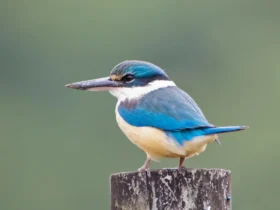The Himalayan Monal (Lophophorus impejanus), also known as the Impeyan Monal or the Danphe, is a remarkable bird that inhabits the stunning landscapes of the Himalayan region. Renowned for its vibrant plumage and graceful presence, the Himalayan Monal holds a special place in the hearts of nature enthusiasts and is often regarded as a symbol of the Himalayas. In this article, we will explore the fascinating characteristics, habitat, behavior, and conservation status of this splendid bird.
Himalayan Monal images
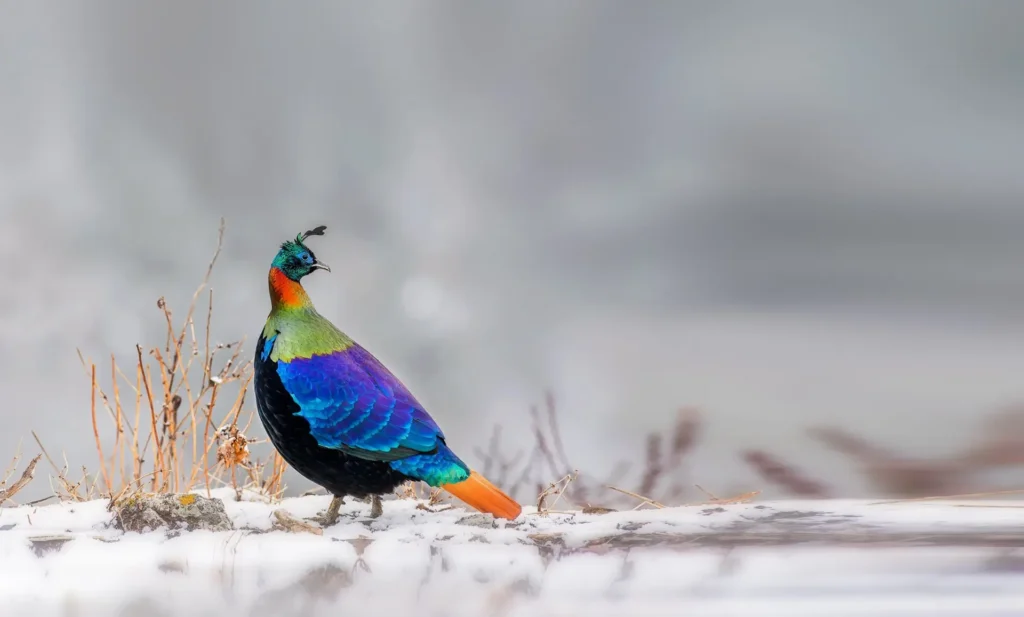
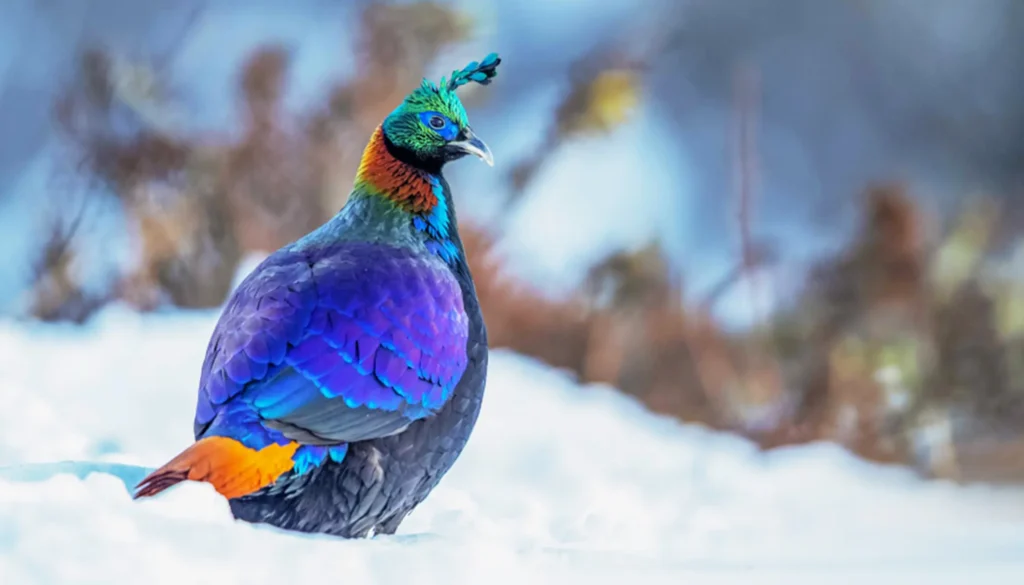

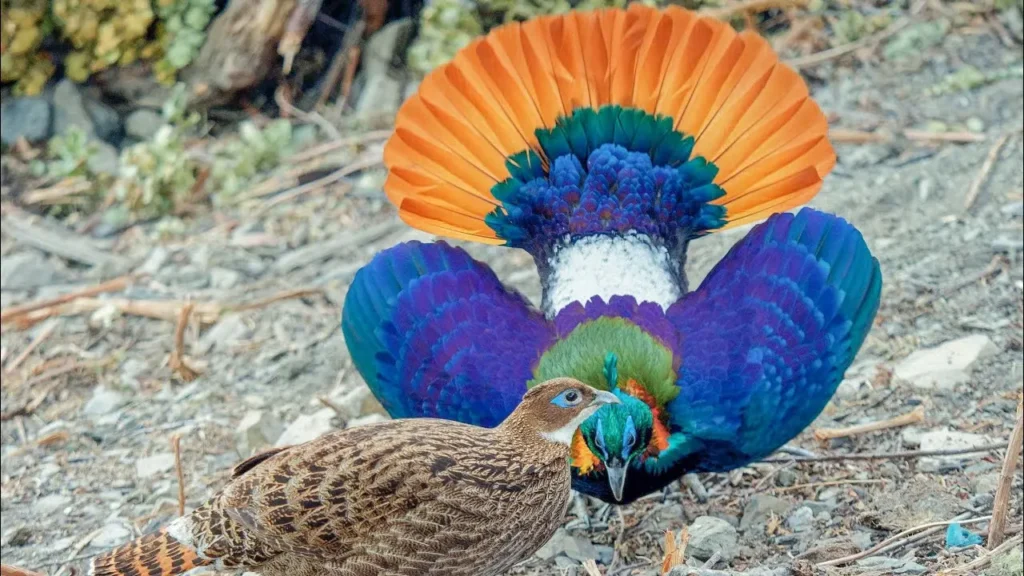




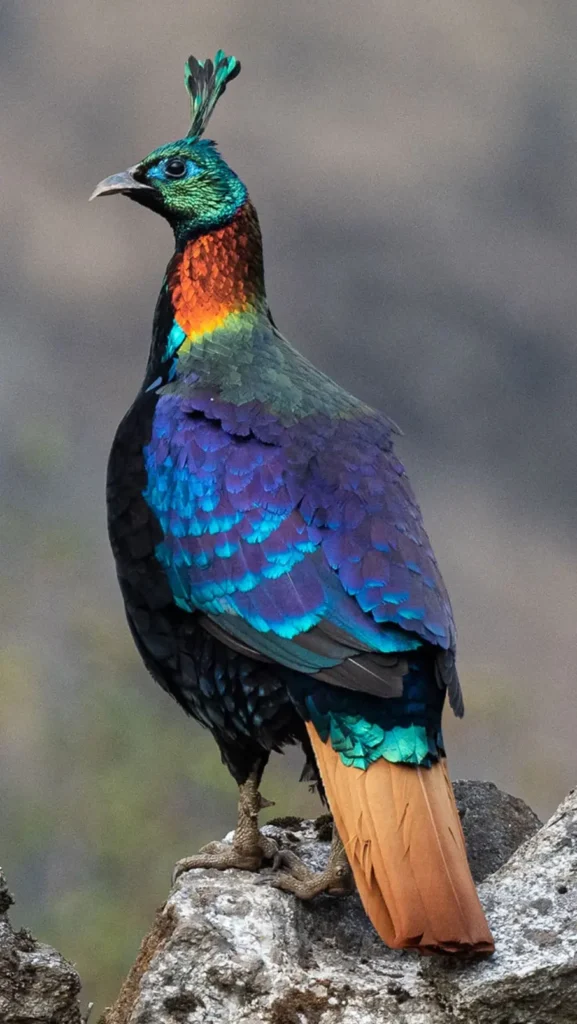
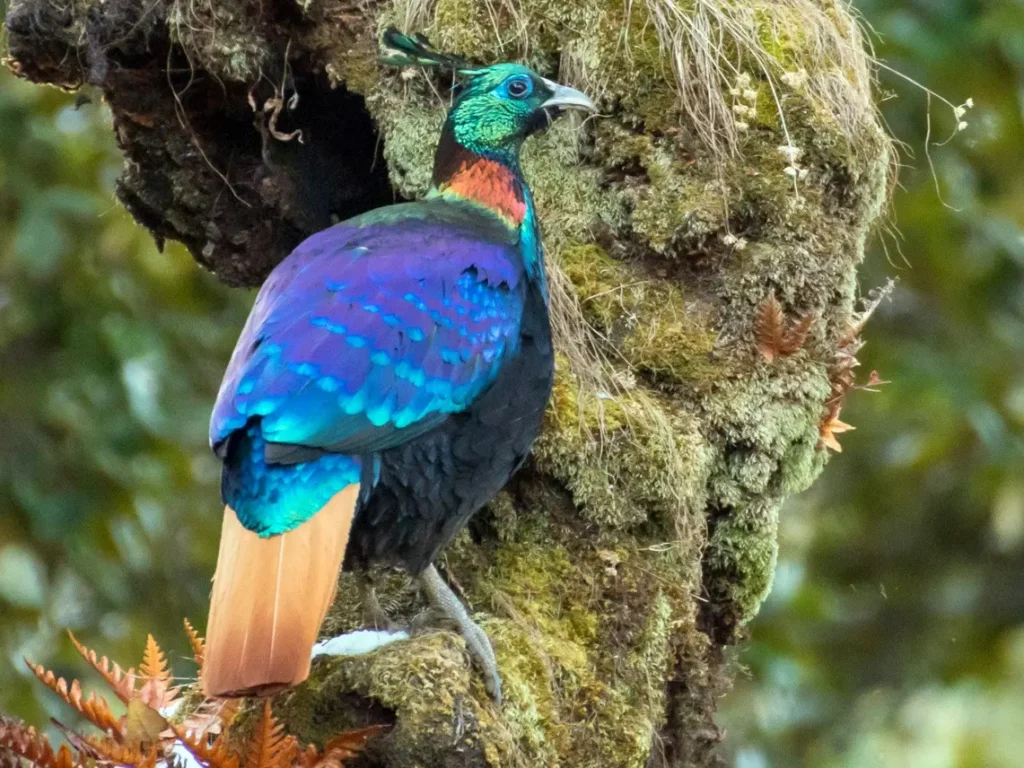
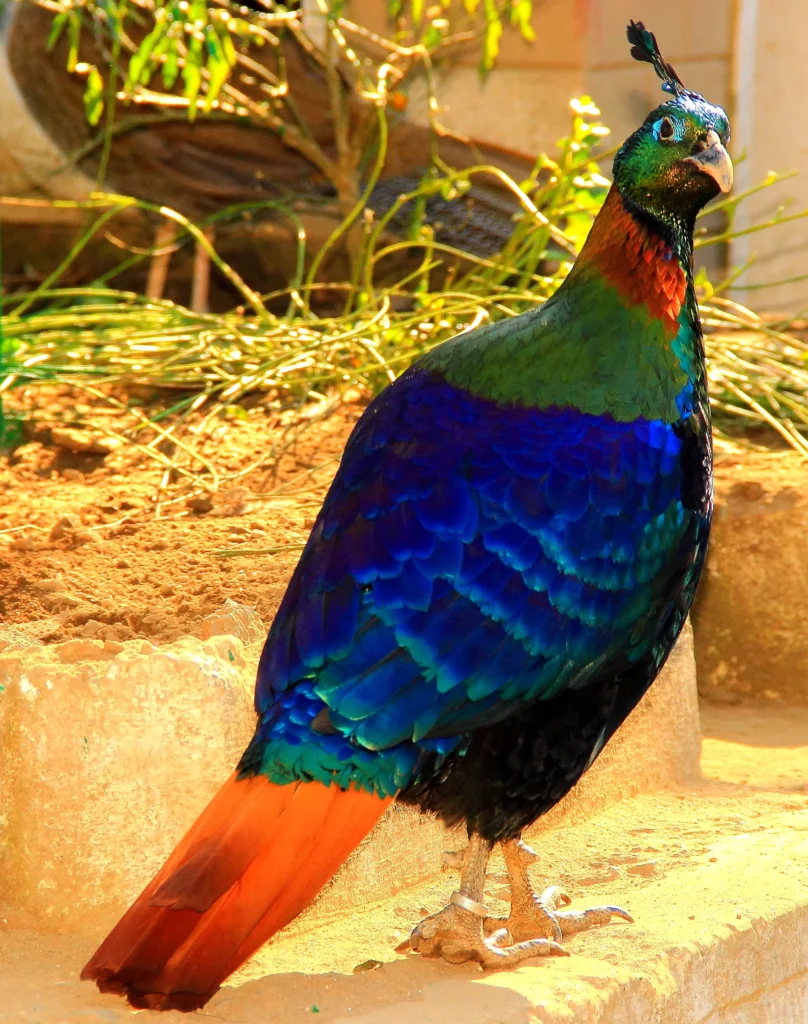






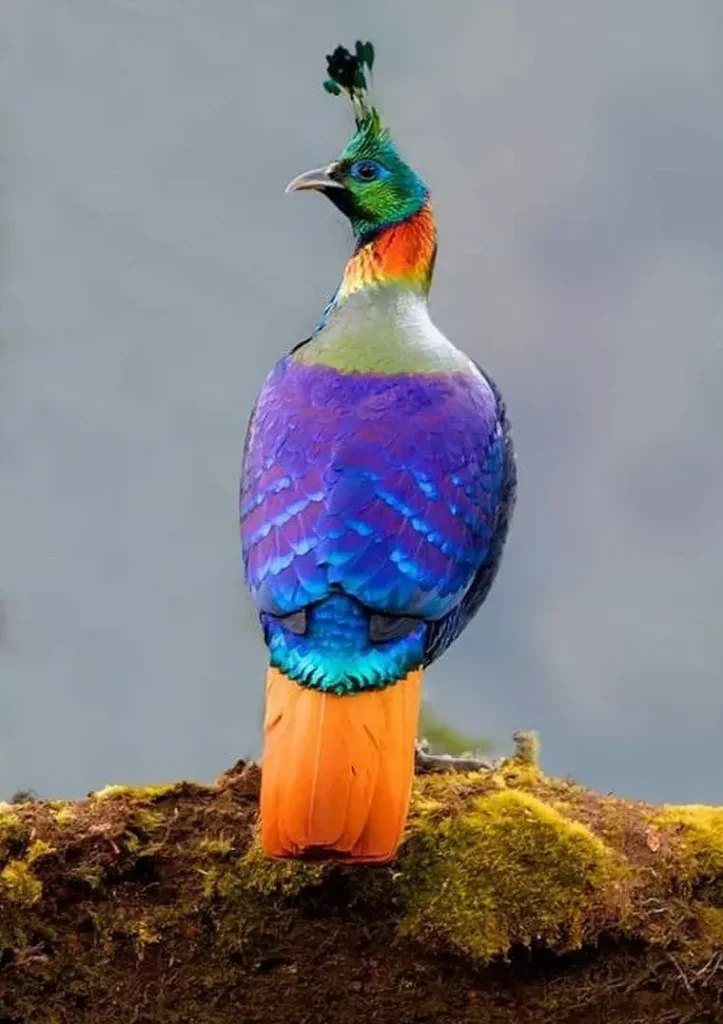







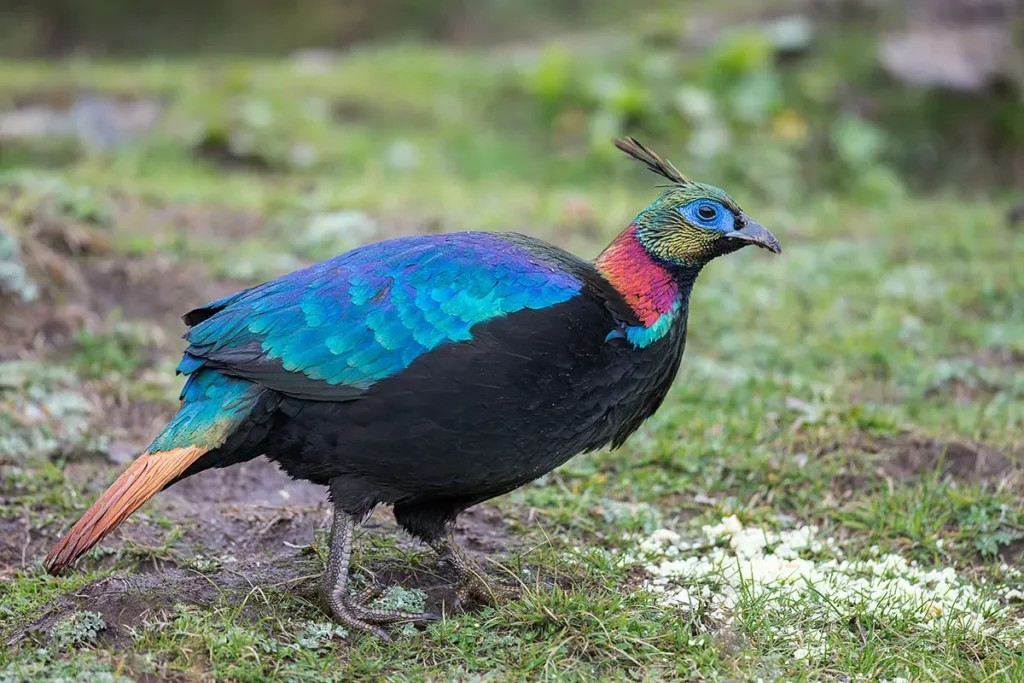

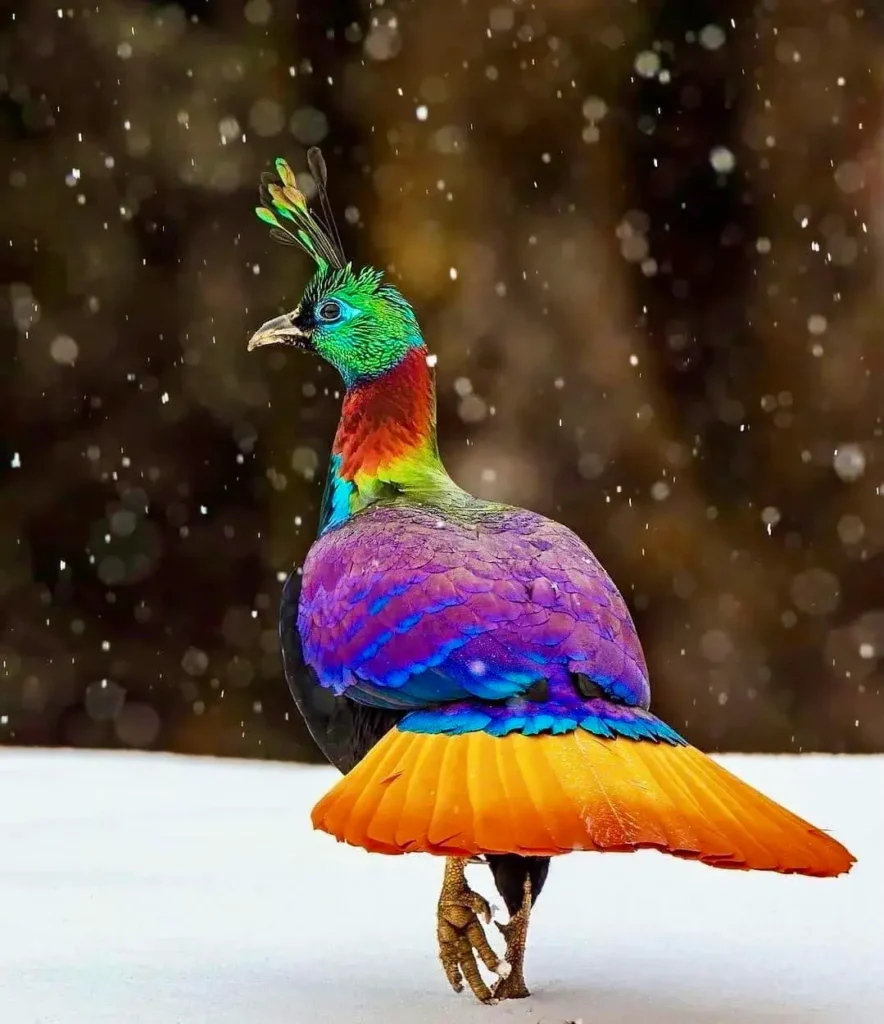
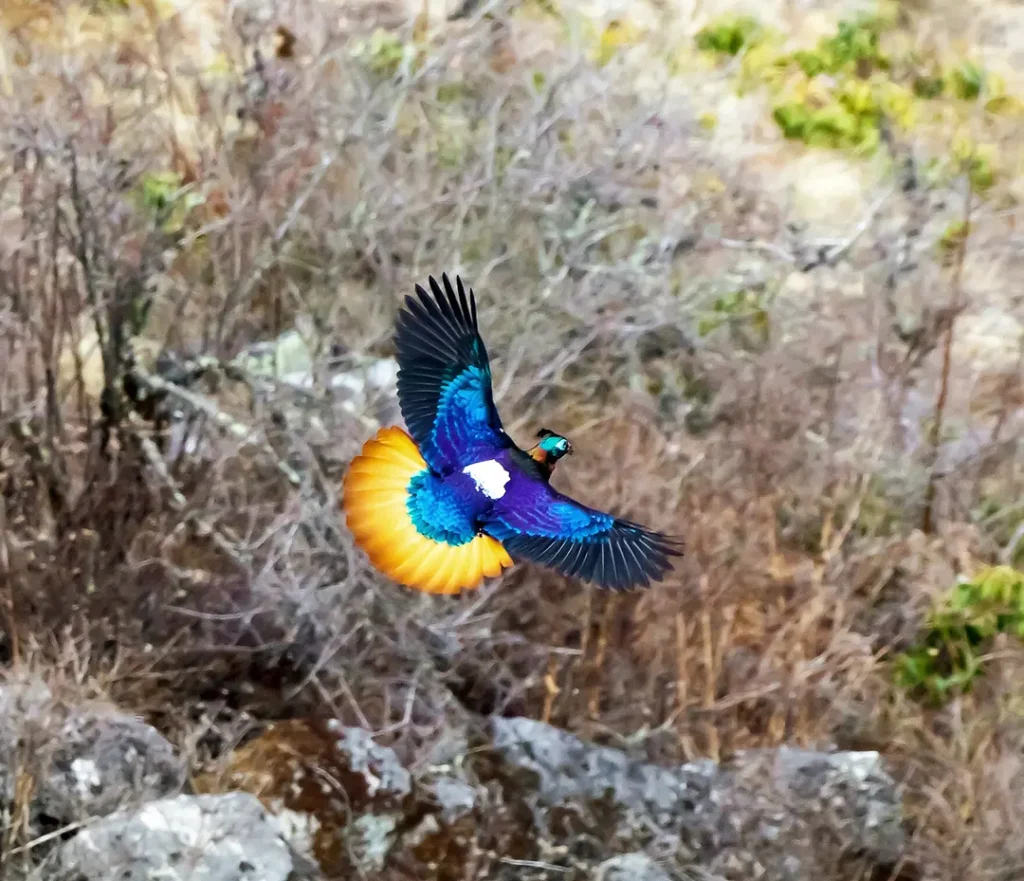
Appearance and Plumage
The Himalayan Monal is a large and striking bird, with the males being more vibrant and colorful than the females. The male Monal boasts a kaleidoscope of colors, including a shimmering metallic green head, a prominent crest of feathers, a bright yellow beak, and a neck adorned with a rainbow-like array of colors ranging from blue, green, and purple to copper and gold. Its wings exhibit a mix of brown, white, and black feathers with intricate patterns. The female, although less flamboyant, displays a beautiful mix of browns and grays, allowing her to blend seamlessly with the surrounding vegetation.
Habitat and Distribution
The Himalayan Monal is endemic to the high-altitude regions of the Himalayas, spanning across Bhutan, India, Nepal, and Tibet. It inhabits a variety of habitats, including coniferous and mixed forests, alpine meadows, and shrubby slopes. These birds prefer elevations between 2,400 and 4,500 meters (7,900 and 14,800 feet) above sea level, where they can find a suitable mix of food, shelter, and breeding grounds.
Behavior and Feeding
The Himalayan Monal is primarily a ground-dwelling bird that forages for food by scratching the forest floor with its strong feet. It has a diverse diet that includes berries, seeds, leaves, insects, and small invertebrates. During the breeding season, the males engage in elaborate displays to attract females. These displays involve erecting their colorful crest, spreading their wings, and producing a range of calls and vocalizations. The Himalayan Monal is known for its distinct and melodious call, which adds to the enchanting ambiance of the Himalayan forests.
Conservation Status and Threats
The Himalayan Monal is classified as “Near Threatened” on the International Union for Conservation of Nature (IUCN) Red List of Threatened Species. The main threats to its population are habitat loss and degradation due to human activities, including logging, agriculture, and infrastructure development. Additionally, hunting and illegal wildlife trade pose significant threats, as the feathers and body parts of the Himalayan Monal are highly valued in some traditional cultures.
Conservation Efforts
Various organizations and government agencies are working together to conserve the Himalayan Monal and its habitat. Efforts include establishing protected areas, promoting community-based conservation initiatives, and raising awareness about the importance of conserving this iconic species. Sustainable tourism practices that support the local economy while minimizing the impact on the bird’s habitat are also being encouraged.
Appreciating the Himalayan Monal
The Himalayan Monal represents the breathtaking beauty and ecological richness of the Himalayas. Its vibrant plumage, mesmerizing calls, and symbolic significance make it a true ambassador of the region’s natural heritage. Observing these birds in their native habitat is not only a treat for birdwatchers and wildlife enthusiasts but also a reminder of the need to conserve the delicate ecosystems they rely on.
The Himalayan Monal is a jewel of the Himalayan mountains, captivating us with its awe-inspiring appearance and unique behavioral traits. As we strive to protect the natural wonders of our planet, preserving the habitat and ensuring the survival of the Himalayan Monal becomes paramount. Through concerted conservation efforts and a collective appreciation for its beauty, we can ensure that future generations continue to marvel at the magnificence of this remarkable bird in the high-altitude realms of the Himalayas.
